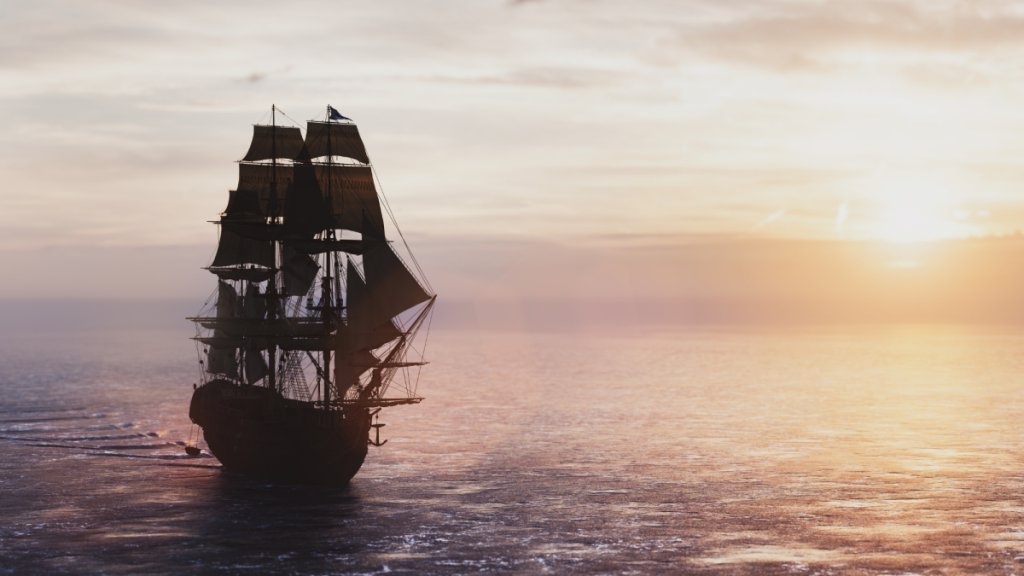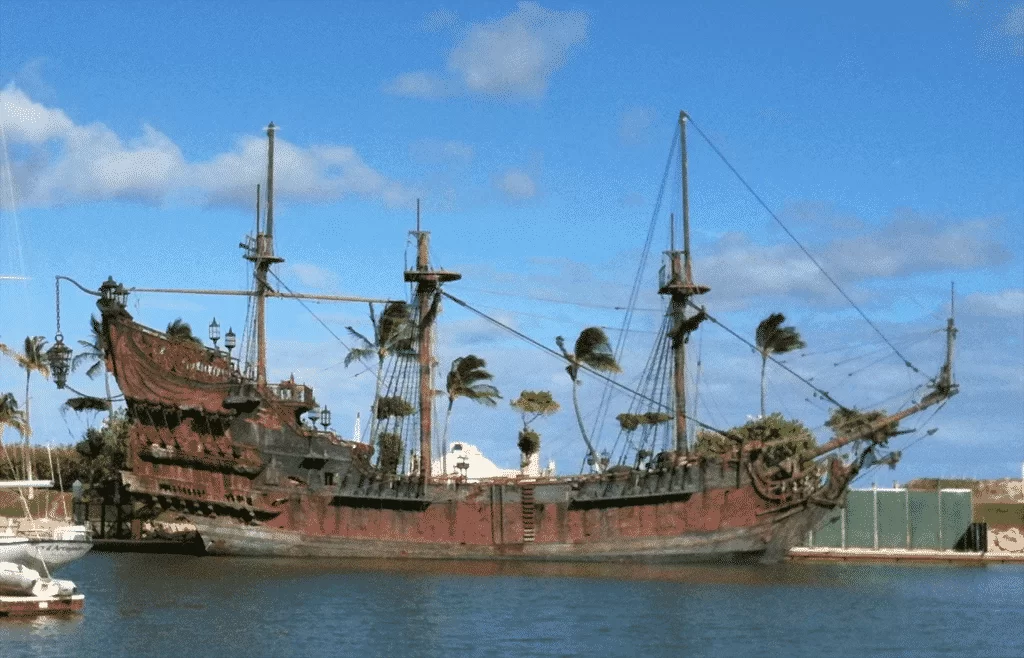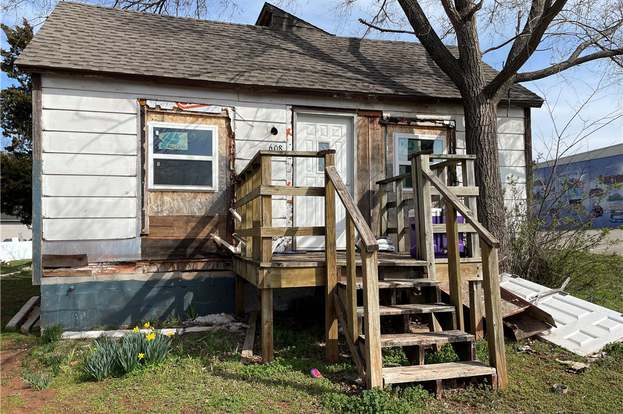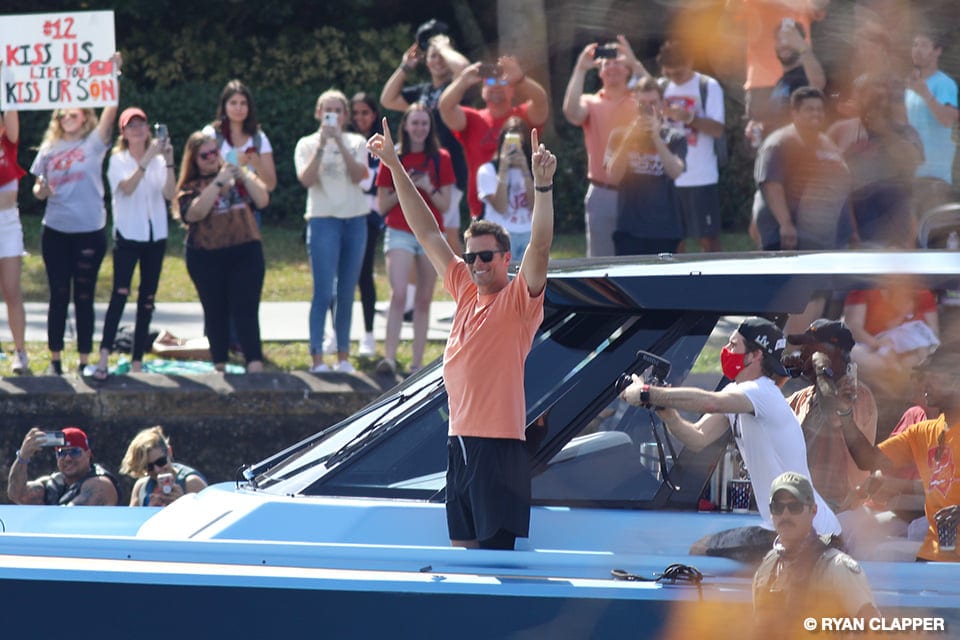Parts of a Pirate Ship: A Comprehensive Breakdown
When thinking of pirates and their ships, one might picture a wooden vessel adorned with a skull and crossbones flag, sailing through the high seas in search of treasure. However, there is much more to pirate ships than meets the eye.

Pirate ships were complex structures with various components, each designed for a specific purpose.
The design and features of a pirate ship played an important role in its performance, safety, and success out on the open seas.
From the shape of the hull to the numerous sails and rigging used to power the ship, each part served a crucial function.
In addition to these basic features, pirate ships often boasted unique advancements in navigation and steering, living quarters for the crew, and equipment for defense and attack.
Key Takeaways
- Pirate ships were complex structures with parts designed for specific purposes
- Ships featured advancements in navigation, steering, and living quarters for the crew
- Pirate vessel design contributed to their performance, safety, and overall success on the open seas
Historical Context
Golden Age of Piracy
During the Golden Age of Piracy, which spanned from 1690 to 1730, pirates roamed the Atlantic Ocean, Indian Ocean, and the coast of West Africa. In this period, pirate ships became iconic symbols of these maritime outlaws.
In my understanding, one of the notable features of pirate ships during the Golden Age of Piracy was the use of flags to communicate their intentions.
The infamous Jolly Roger, a black flag adorned with a skull and crossbones, was almost synonymous with the image of piracy itself. When flown, this flag struck fear into the hearts of merchant crews, as it signaled that a pirate ship was on their tail.
While the Jolly Roger is now the most well-known pirate flag, it wasn't the only one used during that time.
Some pirates would raise a red flag to indicate that they would offer no quarter to those who resisted. This meant that if their intended victims chose to fight, they could expect little mercy from the attacking pirates.
Pirate ships during the Golden Age of Piracy were often converted merchant vessels, refitted to suit their new purpose.

For example, Blackbeard's famous ship, Queen Anne's Revenge, was once a French slaving ship before being captured and modified by the fearsome pirate. With a total of 40 cannons mounted, it became one of the most intimidating pirate ships of its time.
Here's a quick overview of common parts of a pirate ship:
- Hull: The main body of the ship that housed the living quarters, cargo, and weapons.
- Masts and Sails: Masts were tall spars used to support the sails, which allowed the ship to harness wind power for propulsion.
- Crows Nest: A lookout platform mounted on the mainmast.
- Deck: The surface on which the crew moved, worked, and fought.
- Gunnels: The upper edges of the ship's sides.
Life on a pirate ship was not glamorous, and it was filled with challenges and hardships.
Pirates operated outside the law, and their ships were their homes, their workplaces, and their battle stations.
Understanding the historical context and the realities of the Golden Age of Piracy helps paint a more accurate picture of these notorious sea bandits and their iconic ships.
Pirate Ship Anatomy
Hull Structure
The hull is the main body of a pirate ship, providing the vessel with its structure, buoyancy, and strength.
It consists of a few key elements: the keel, which is the ship's backbone running down the center; the frames, or ribs, that are attached to the keel and provide support for the hull planks; and the planking itself, which fastens to the frames to create the ship's exterior.
A well-designed hull was crucial for a pirate ship to withstand the rigors of the open sea and perform at its best.
Deck Layout
A pirate ship's deck is the horizontal surface covering the full length and width.
The main deck is where most of the ship's daily activities took place, and it housed important features like the navigation instruments and cannons.
Pirates needed an efficient deck layout since space was at a premium.
There could be several decks on a ship, with each having a specific purpose, such as the gun deck, which housed the ship's artillery, or the berthing deck, where the pirates slept.
Masts and Sails
The masts are the vertical poles supporting the sails, which were essential for propelling the ship via wind power.
There are typically three main masts on a pirate ship: the foremast, closest to the bow (front); the mainmast, taller and situated near the center; and the mizzenmast, toward the stern (back).
Each mast supported various sails that could be raised or lowered depending on the desired speed and direction. A well-coordinated pirate crew was able to adjust the sails to navigate efficiently and effectively.
Rigging and Ropes
The rigging is a complex system of ropes, pulleys, and blocks that control the sails and masts.
Pirates extensively used ropes in various tasks, from raising and lowering sails to anchoring and mooring.
They had to be proficient in knot-tying and rigging maintenance to ensure the ship's safety and maneuverability.
Rigging also played a vital role in raising and lowering the ship's gunwale, a critical component during battles, as it protected the crew and deck from enemy fire.
Working with rigging required skill and strength, especially during rough seas or in the heat of battle.
Ship Features
Stern and Bow
The stern is the rear part of a pirate ship, while the bow refers to the front part.
The bow of a pirate ship often features a bowsprit, which is a long pole extending forward from the ship's bow. This apparatus helps to support various sails and rigging to improve the ship's sailing performance.
In addition to the bowsprit, the bow is designed to cut through waves efficiently, allowing the vessel to maintain momentum.
On the other hand, the stern includes the poop deck, an elevated deck located at the ship's rear. From here, the captain can have a great view of the entire ship and navigate more effectively.
Aft, Back, and Quarter
The aft, also known as the abaft, refers to the area near or at the stern of the pirate ship.
It's important to differentiate the aft from the back of the ship, which is essentially the stern part.
The quarter, on the other hand, is the term used to describe the sides of the ship towards the stern. If you are standing at the aft-most part of the ship looking forward, the port quarter is on your left, and the starboard quarter is on your right.
Properly understanding these terms helps one to understand how a pirate crew organized and moved about their vessel in a coordinated manner.
The division of a ship into such zones also contributed to shipboard tasks, including the maintenance of sails and the preparation for enemy engagements.
Port and Starboard
When working on a pirate ship, it's crucial to know the difference between the port and starboard sides of the vessel.
The port side refers to the left side of the ship when facing forward towards the bow, while the starboard side refers to the right side.
These terms are used consistently regardless of the observer's position on the ship, ensuring clear communication among crew members.
In order to maintain stability and ensure efficient sailing, it's important for a pirate ship's cargo, as well as crew members, to be distributed evenly between port and starboard.
Understanding and using these terms correctly made it easier for pirate crews to function effectively during their voyages.
Navigation and Steering
Helm and Rudder
The helm, or steering wheel, is a crucial part of a pirate ship. It controls the rudder, which is a flat, vertical piece attached to the ship's stern.
I find the rudder essential as it allows me to steer the ship left or right by changing the direction of water flow around it.
In some cases, pirate ships feature a tiller instead of a helm. A tiller is a long handle attached directly to the top of the rudder.
It can be quite effective, but I prefer a helm as it allows me better control over the ship's movement.
Compass and Navigation Tools
As a pirate, possessing accurate navigation tools is invaluable.
One indispensable tool I rely on is the compass.
A compass is a magnetic instrument that indicates the ship's direction in relation to the Earth's magnetic field. It enables me to maintain a steady course and helps me find my way back to shore or a specific location.
A binnacle is another essential piece of equipment on board.
A binnacle houses the ship's compass and comes with a lamp to illuminate the compass at night. It also protects the compass from adverse weather.
Properly mounted and balanced, the binnacle ensures that the compass remains stable even as the ship moves through rough seas.
Living Quarters
Captain's Quarters
The Captain's Quarters on a pirate ship was often the most lavish and well-decorated area, reserved exclusively for the ship's leader. This space usually featured a large bed, personal belongings, and navigational tools. The Captain's Quarters were typically located at the rear of the ship (the stern), providing the captain with an excellent view of their vessel and crew.
As the ultimate authority on the ship, the captain required a space separate from the crew to strategize and make important decisions. Occasionally, trusted officers would be invited to join the captain in their quarters for important meetings.
Crew Quarters
On the other hand, the Crew Quarters were markedly different, being far less spacious and comfortable. The crew members usually slept in hammocks or bunks in a common area called the "berth." These sleeping areas were often close together and cramped.
To accommodate the crew's various needs, here is a brief list of necessities found in the Crew Quarters:
- Sleeping area: Hammocks or bunks lined up close together.
- Personal items: Small chests or bags to store belongings and clothing.
- Weapons: Cutlasses, muskets, and pistols stored nearby.
- Recreational zone: A designated area for games and camaraderie during downtime.
Cleanliness and orderliness were not the biggest priorities in the Crew Quarters, which was sometimes seen as the ship's "dirtier" area.
Galley
The galley was the ship's kitchen, where the cook would prepare meals for the crew. Pirate ships relied heavily on preserved foods, such as salted meat and hardtack (a type of biscuit), due to the lack of refrigeration. Fresh food was highly sought after, and whenever possible, the pirates would replenish their supplies ashore.
In the galley, the cook was in charge of rationing food and ensuring that the crew had enough to eat. Some of their responsibilities included:
- Food storage: Preserving and storing food supplies.
- Meal preparation: Cooking meals for the entire crew.
- Rationing: Distributing food and drink in reasonable proportions.
- Hygiene: Maintaining a clean and healthy cooking environment.
Despite the challenging conditions, the cook played a crucial role in keeping the crew fed and healthy on long voyages.
Armament and Defense
Cannons and Artillery
The primary means of defense and attack on pirate ships were cannons. Typically, cannons were placed on the gun deck and their number depended on the size of the ship. As for Queen Anne's Revenge, historical accounts suggest that there were as many as 40 cannons on the ship. It is known that the cannons utilized various types of ammunition such as iron cannon balls and bar shots.
I'd like to mention that the placement of cannons on ships was crucial for their effectiveness. To optimize their line of sight, cannons were usually positioned along the sides of a ship, allowing for simultaneous fire, known as a broadside. Additionally, swivel guns, smaller and more maneuverable, were sometimes mounted on the ship's railings for added firepower and flexibility.
Small Arms and Weapons Storage
Apart from cannons and artillery, pirate ships were also equipped with an array of small arms such as muskets and pistols. These weapons were stored securely in designated areas like the armory or weapons locker.
Pirates had a preference for boarding enemy vessels to engage in hand-to-hand combat, rather than relying solely on their cannons. For this reason, they carried a variety of melee weapons like cutlasses, knives, and even specialized boarding axes. These weapons were often stored within easy reach on the deck or in the crew's personal quarters in preparation for battle.
The combination of cannons, small arms, and melee weapons provided pirates with an effective range of offensive and defensive options in naval warfare.
Storage and Utility Areas
Hold and Bilge
In the lower part of a pirate ship, we find the hold and the bilge. The hold is the primary storage area for essential items, such as food, water, and ammunition. On many pirate ships, the hold also housed the crew's personal items and, of course, the treasure chest. Good organization and proper storage were crucial to keeping the ship in the best condition and ensuring that the pirates were always prepared for any situation.
The bilge is the lowest point of a ship's hull, where water and debris would accumulate. It is essential to keep the bilge clean and dry, as excessive water or debris could lead to the ship's instability. To do this, pirate ships typically had bilge pumps, which allowed the crew to pump out water from the bilge and safeguard the ship's overall structural integrity.
Orlop Deck
Above the hold is the orlop deck, which served as the primary utility and workspace area on a pirate ship. This deck housed important facilities such as the crew's living quarters, the galley, and storage rooms for equipment and cargo. The orlop deck also contained the ship's essential machinery, including the capstan and the anchor cable reels.
An essential component contributing to a pirate ship's stability is the ballast, usually found on the orlop deck. The ballast consists of rocks, sand, or any heavy materials that help distribute the ship's weight evenly and maintain its balance in the ocean.
Sailing and Maneuvering
Tack and Lee
When I'm sailing a pirate ship, one of the essential aspects to understand is the tack and lee. Tack refers to the side of the ship the wind is coming from, while lee refers to the opposite side sheltered from the wind. As a skilled sailor, I use these terms to communicate my ship's position relative to the wind and make necessary course adjustments.
Sails and Rigging Adjustments
On a pirate ship, the sails and rigging play a crucial role in maneuvering and sailing efficiently. Depending on the direction and strength of the wind, I adjust my sails to optimize the ship's performance.
- Yardarm: A horizontal beam attached to the mast, used to spread the sail. I adjust the yardarm's angle to catch or deflect the wind effectively.
- Fore-and-aft sail: These sails run along my ship's length, allowing me to sail closer to the wind. By adjusting the tension on the sheets (ropes connected to the sails), I can control the angle of the sails relative to the wind.
- Reef: In strong winds, I need to reduce the sail area to avoid damage and maintain control. I do this by reefing the sails, which involves loosening the sail's tension and folding portions of the sail around the mast or yard. This process allows me to adjust the sail's size, maintaining a safe speed and course in challenging conditions.
Ship Symbols and Flags
Figurehead
A figurehead is an important decorative piece usually found on the bow of a pirate ship. They were intricately carved wooden sculptures that often depicted mythical creatures, animals, or historical figures. The purpose of the figurehead was not only for decoration but also to showcase the personality and values of the ship.
Boat Maintenance
Wooden Planks and Hull Care
Caring for the wooden planks of a pirate ship was an essential task that I performed to maintain the ship's integrity. I made sure to inspect the hull regularly for signs of damage or wear, paying special attention to the bilge, where water could accumulate, and if left unchecked, cause damage to the lower parts of the ship's interior. To ensure proper drainage, I kept the scuppers clear of debris and well-maintained.
Another crucial aspect of hull care was repairing any damage sustained during battles, storms, or daily wear. I utilized tools such as oakum, a type of caulking made from old ropes boiled in tar or pitch, to seal any gaps in the wooden planks and prevent water seepage (source).
Rope and Sail Repair
With the complex rigging system on a pirate ship, I had to always be prepared to handle rope and sail repairs. I routinely inspected the ropes for fraying, rot, or damage.
I performed the necessary repairs by splicing or replacing sections.
To maintain the sails, I followed these basic steps:
- Inspection: Check for wear or damage due to weather, sun exposure, or enemy fire.
- Mending: Sew any tears or holes on the sails, ensuring the stitching is strong and even to maintain the sail's integrity.
- Replacing: Replace sections of a sail or an entire sail when repairs were no longer viable.
Taking proper care of my ship's wooden planks, hull, ropes, and sails was vital to ensure a sturdy and reliable vessel that could withstand the harsh demands of a pirate's life on the open sea.
Frequently Asked Questions
What is the name for the front section of a pirate ship?
The front section of a pirate ship is called the bow. The bow is an important part of the ship as it is designed to cut through the water and waves, allowing the ship to sail smoothly and efficiently.
How is a pirate ship's interior organized and what are the common areas?
A pirate ship's interior is organized into various common areas such as the hold, which is the storage area for cargo and provisions.
There's also the galley, where food is prepared, and the mess, where the crew eats. Additionally, the bilge is located in the ship's belly and helps collect water that seeps in, while the gun deck is where the ship's cannons are located.
What are the specific functions of the masts and sails on a pirate ship?
Masts are the tall poles that rise from the deck, and sails are the large fabric structures attached to the masts.
Sails on a pirate ship catch the wind, which propels the ship forward. There are different types of sails on a pirate ship, like the mainsail, which is the largest, and the foresail, which is found on the mast closest to the bow. The number of masts and arrangement of sails is crucial for sailing efficiency.
Can you name the parts of a pirate ship involved in steering and navigation?
The main parts of a pirate ship involved in steering and navigation are the helm and the rudder.
The helm is the ship's wheel, responsible for controlling the rudder's angle. The rudder is a large fin-like structure located at the stern (rear) of the ship, which helps steer it in different directions. Additionally, the crow's nest is an important part of a pirate ship, as it serves as a lookout point for the crew to spot land, other ships, or obstacles in their path.
What's the term for the highest deck on a pirate ship?
The highest deck on a pirate ship is called the poop deck. Contrary to its name, it is not related to bodily functions. Instead, it's the most elevated part of the ship, providing an excellent vantage point for spotting other ships or land.
Could you identify the part of a pirate ship where the crew's quarters are located?
The crew's quarters on a pirate ship are typically located in an area called the 'tween decks'. This area is between the lower deck and the upper deck.
This area offers shelter and living space for the crew while they're not on duty.
Charlie is Editor-in-Chief of Sea Magazine







